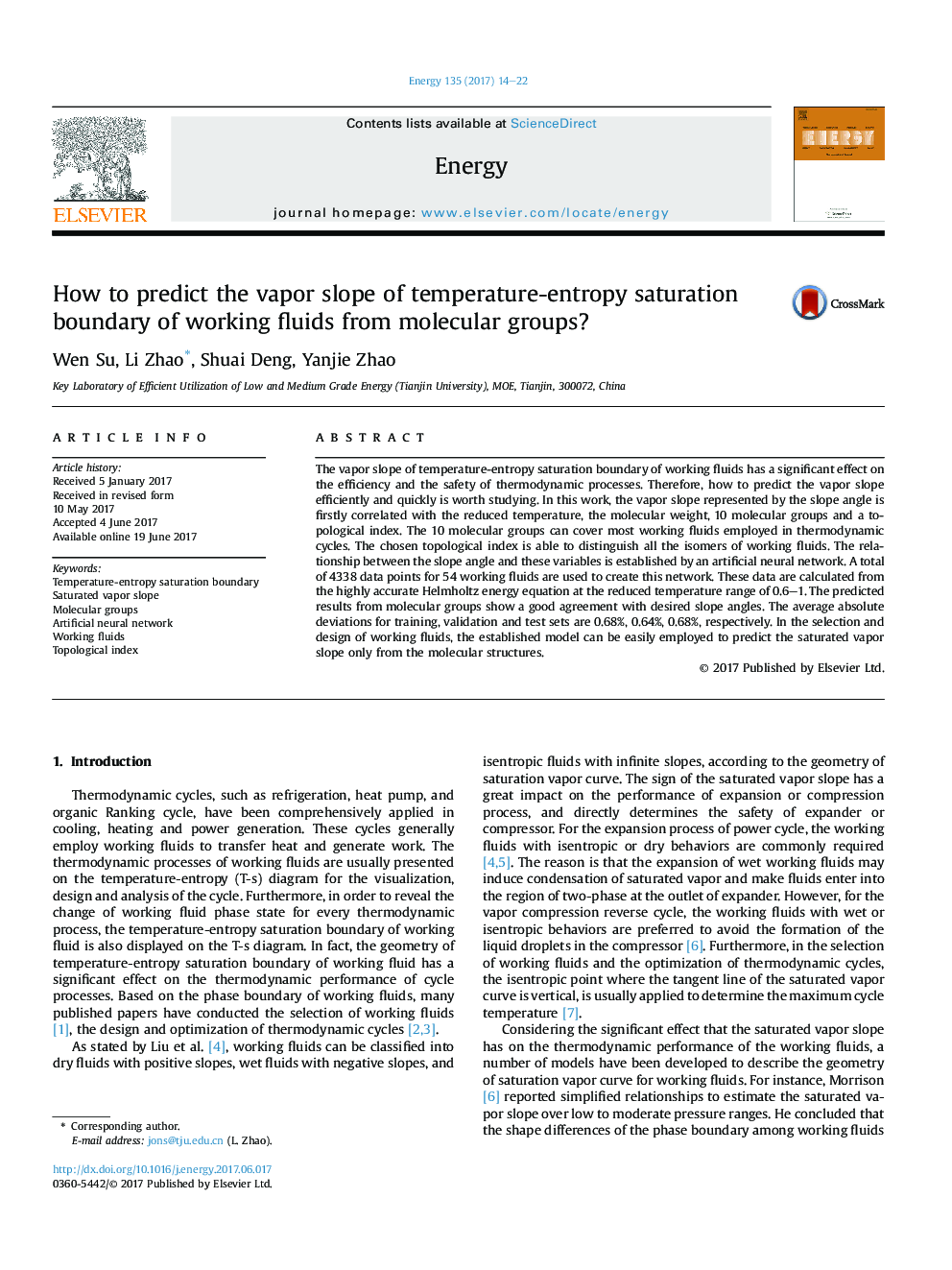| Article ID | Journal | Published Year | Pages | File Type |
|---|---|---|---|---|
| 5476374 | Energy | 2017 | 9 Pages |
Abstract
The vapor slope of temperature-entropy saturation boundary of working fluids has a significant effect on the efficiency and the safety of thermodynamic processes. Therefore, how to predict the vapor slope efficiently and quickly is worth studying. In this work, the vapor slope represented by the slope angle is firstly correlated with the reduced temperature, the molecular weight, 10 molecular groups and a topological index. The 10 molecular groups can cover most working fluids employed in thermodynamic cycles. The chosen topological index is able to distinguish all the isomers of working fluids. The relationship between the slope angle and these variables is established by an artificial neural network. A total of 4338 data points for 54 working fluids are used to create this network. These data are calculated from the highly accurate Helmholtz energy equation at the reduced temperature range of 0.6-1. The predicted results from molecular groups show a good agreement with desired slope angles. The average absolute deviations for training, validation and test sets are 0.68%, 0.64%, 0.68%, respectively. In the selection and design of working fluids, the established model can be easily employed to predict the saturated vapor slope only from the molecular structures.
Related Topics
Physical Sciences and Engineering
Energy
Energy (General)
Authors
Wen Su, Li Zhao, Shuai Deng, Yanjie Zhao,
